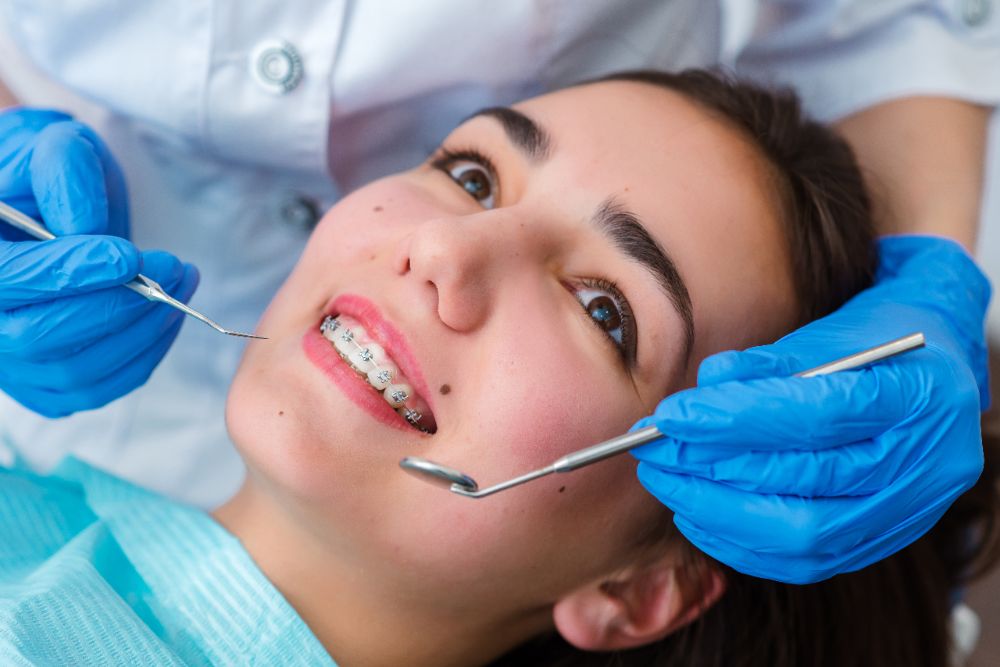Comprehensive Overview to Orthodontics Treatments for Correcting Dental Misalignments
Comprehending the ins and outs of each procedure, including their systems, benefits, and potential drawbacks, is essential in making informed choices concerning one's orthodontic therapy. As we navigate through the comprehensive overview to orthodontic treatments for remedying dental misalignments, the elaborate details of each approach will certainly unravel, dropping light on the path toward a unified and useful dental placement.
Orthodontic Procedures Review

Along with conventional braces and clear aligners, orthodontists might additionally suggest other treatments like headwear, palatal expanders, or retainers to attend to particular placement issues (cumming aligners). These procedures are tailored to each client's special requirements and may involve a mix of treatments to achieve the desired results. Regular adjustments and monitoring are vital components of orthodontic treatment to ensure progression gets on track and to make any kind of required alterations in the process. By undergoing orthodontic treatments, individuals can not only achieve a straighter smile yet additionally boost their overall oral wellness and function.
Traditional Braces: How They Function
When considering orthodontic treatments for oral imbalances, typical braces stand out as a reliable approach for dealing with teeth positioning. Typical dental braces consist of brackets, cords, and bands that function together to apply constant stress on the teeth, gradually moving them right into the wanted positioning.
One secret element of just how conventional braces work is the procedure of bone renovation. As stress is related to the teeth through the braces, the bone bordering the teeth is reshaped to sustain the new tooth placements. This renovation is necessary for the long-lasting security of the corrected positioning. Patients will certainly require normal changes at the orthodontist's office to make certain the braces remain to use the appropriate stress for efficient teeth activity.
Undetectable Aligners: Cons and pros
Unseen aligners offer a discreet and practical choice to traditional braces for fixing oral misalignments. These clear, customized trays are virtually invisible when put on, making them an enticing choice for individuals seeking a more cosmetically pleasing orthodontic therapy. One of the key advantages of undetectable aligners is their removability, enabling for simpler maintenance of oral hygiene compared to typical dental braces. Patients can get rid of the aligners before consuming or cleaning their teeth, lowering the danger of food obtaining embeded the home appliance and simplifying the cleaning procedure.

Surgical Orthodontic Options
Surgical interventions in orthodontics present practical options for dealing with complex dental misalignments that may not be effectively dealt with through conventional orthodontic treatments. While unseen aligners and standard dental braces can fix numerous orthodontic issues, particular instances need surgical intervention to attain optimal outcomes. Surgical orthodontic choices are usually suggested for severe malocclusions, significant jaw inconsistencies, and instances where the underlying bone structure requires alteration to attain proper alignment.
One common medical orthodontic treatment is orthognathic surgery, which entails rearranging the jaws to fix functional issues such as difficulty eating or talking. This surgical procedure is typically performed in partnership with an orthodontist who helps straighten the teeth before and after the procedure. Surgical orthodontics may also include procedures to reveal affected teeth, get rid of excess gum cells, or reshape the jawbone to develop a more unified facial profile.
Prior to thinking about medical orthodontic choices, people go through a comprehensive analysis to identify the need and potential benefits of such treatments. cumming braces. While surgery might seem complicated, it can considerably boost both the function and appearances click to read more of the smile in cases where standard orthodontic therapies fall short
Retainers and Post-Treatment Care

Post-treatment care entails following the orthodontist's directions diligently. This may consist of correct oral health practices, attending follow-up visits, and putting on the retainers as dentist near me open today prescribed. Failure to abide with post-treatment care guidelines can cause regression, where the teeth gradually return in the direction of their initial settings. Constant retainer wear, great dental health, and routine oral check-ups are vital for preserving the outcomes accomplished with orthodontic surgical treatment and making sure the long-lasting stability of the fixed dental alignment.
Final Thought
To conclude, orthodontic procedures supply different options for fixing dental imbalances. Conventional braces make use of metal braces and cables to shift teeth right into appropriate alignment. Unseen aligners supply a more very discreet alternative yet may not be suitable for all instances. Surgical orthodontic options are readily available for a lot more severe imbalances. Retainers are typically made use of post-treatment to preserve the brand-new positioning. Overall, orthodontic treatments can efficiently boost dental wellness and aesthetic look.
As we browse through the detailed overview to orthodontic procedures for remedying dental misalignments, the detailed details of each technique will certainly unfold, dropping light on the course toward a directory functional and unified oral alignment. - aligners
One of the most usual orthodontic treatments is the use of dental braces, which are composed of metal brackets and cords that apply gentle stress to gradually move teeth right into the wanted placement.When considering orthodontic therapies for oral imbalances, typical braces stand out as a tried and true technique for remedying teeth placing. Additionally, unnoticeable aligners might not be ideal for complex orthodontic concerns that call for even more significant teeth movement, as they are typically recommended for mild to moderate cases. Retainers are custom-made orthodontic devices designed to hold teeth in their corrected positions after the conclusion of orthodontic therapy.